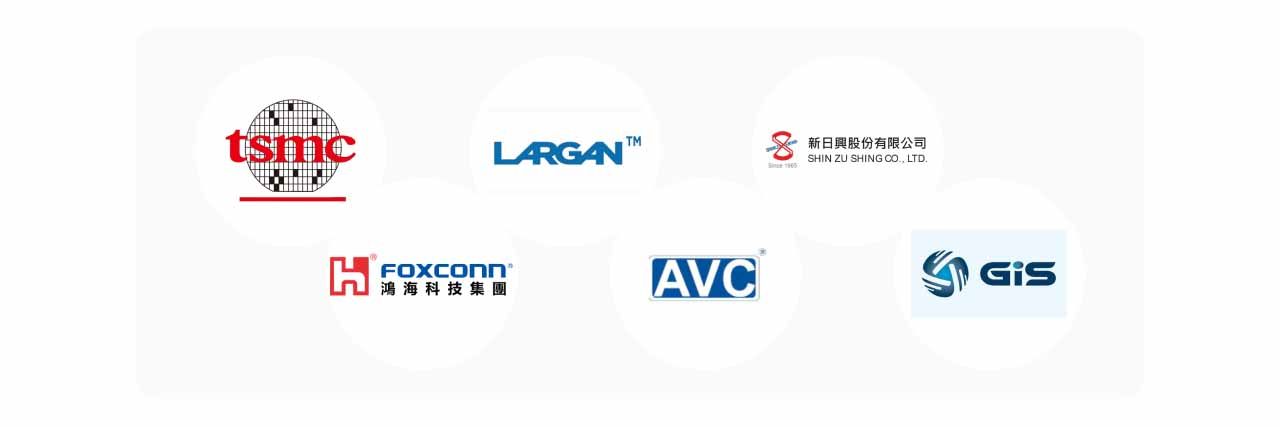As a leading force in the global technology sector, Apple has long driven innovation in hardware and product design, shaping the consumer electronics landscape. Its core product lineup—including the iPhone, Mac, iPad, and Apple Watch—is built on a tightly integrated ecosystem powered by proprietary operating systems. Though Apple maintains a relatively streamlined portfolio, each product holds a strong, distinct market position. The iPhone consistently leads the premium smartphone segment, while the iPad and AirPods also dominate their respective categories. Overall, Apple commands a dominant position in the global consumer electronics market, backed by a vast and highly synchronized supply chain that not only supports its market leadership but also drives industry-wide transformation. This makes Apple a focal point of attention for both markets and the broader tech sector.
Apple’s Supply Chain Strategy — From “Made in America” to Global Production

Apple was founded in 1976 by Steve Jobs and Stephen Gary Wozniak. In its early years, Jobs championed the idea of manufacturing in the U.S. However, as globalization and specialization intensified, that strategy became increasingly impractical. In 1992, Apple was forced to close its Macintosh factory in California due to inadequate automation and inefficiencies in production. The following year, excess inventory of PowerBooks caused significant financial losses. By 1995, Apple had underestimated demand for its new Power Macs, and its inflexible supply chain led to production shortfalls, further highlighting operational challenges.
- In 1998, Tim Cook became Senior VP of Operations and introduced Just-In-Time (JIT) manufacturing. Within just seven months, he reduced Apple’s inventory turnover from 30 days to 6 days. Unsold Mac inventory dropped from $400 million to $78 million.
- After being promoted to COO in 2007, Cook shifted focus toward cost efficiency, choosing to outsource manufacturing globally rather than build in-house plants. He invested in SAP’s enterprise resource planning (ERP) system to improve forecasting and inventory management and integrated it across suppliers, assemblers, and retailers. Since 1999, Apple has maintained an inventory cycle of around five days, demonstrating the efficiency and maturity of its supply chain operations.
Apple’s Evolving Supply Chain: A Global Diversification Strategy
China has long attracted electronics manufacturers with its low labor costs and has played a critical role in Apple’s supply chain over the past two decades. However, Apple has recently begun diversifying its operations, driven by three key factors:
- The pandemic exposed the risks of over-concentration in one region.
- U.S.–China trade tensions and tariff hikes significantly increased costs.
- Rising wages in China as the economy matures.
In response, Apple adopted a “China +1” strategy starting in 2017, reallocating parts of its production and supply chain to other countries to reduce risk:
- India: Now produces over 15% of global iPhones, with further expansion planned.
- Vietnam: A key manufacturing hub for AirPods and Apple Watch, with 35 Apple suppliers operating locally.
- Mexico: Positioned to become a new assembly base for Macs and iPads, given its proximity to the U.S. market.
- Thailand, Indonesia, and Malaysia: Focused on component assembly and midstream manufacturing, absorbing lower-end production shifted from China.
Trump-Era Tariffs Introduce New Supply Chain Uncertainties

India is emerging as Apple’s most promising alternative to China, supported by a large population and growing infrastructure investment. However, challenges remain—quality control, labor efficiency, and policy instability continue to hinder the transition.
Meanwhile, China retains key advantages, including high production yields and a complete manufacturing ecosystem. Most of Apple’s high-end product lines remain concentrated in China, and certain advanced processes still rely heavily on Chinese suppliers, making a full short-term exit unlikely.
On another front, U.S. President Donald Trump repeatedly pushed for Apple to move production back to American soil. In response, Apple recently announced a $600 billion investment over the next four years in U.S. manufacturing initiatives, further adding complexity to its global supply chain outlook.
Taiwan's Strategic Role in Apple’s Global Supply Chain
Taiwan plays a crucial role in Apple’s global supply chain, contributing to advanced chip fabrication, key component supply, and final product assembly. Taiwanese suppliers have long-standing partnerships with Apple. Even as Apple diversifies to India and Vietnam, Taiwan maintains its position through technological leadership and supply chain influence. Taiwan is not only a vital manufacturing base but also a cornerstone of Apple’s innovation and competitive edge.
Each year, Apple releases a list of top suppliers covering about 98% of its procurement value. In the 2025 edition, dozens of publicly listed Taiwanese companies are included, spanning chip foundries, assembly, PCBs, optics, batteries, displays, connectors, and more.
Apple’s Key Taiwanese Suppliers (2025)
| Category | Company Name (Stock Ticker) |
|---|---|
| Optical Lenses | Largan Precision (3008), Genius Electronic Optical (3406) |
| Semiconductor Foundry | TSMC (2330) |
| Memory | Winbond Electronics (2344) |
| Passive Components | Yageo Corporation (2327) |
| Power Supply | Delta Electronics (2308), Lite-On Technology (2301) |
| PCB, FPC | Compeq Manufacturing (2313), Unitech PCB (2367), Nan Ya PCB (8046), Unimicron (3037), Career Technology (6153), Flexium Interconnect (6269), Zhen Ding Tech. (4958), Kinsus Interconnect (3189), Tripod Technology (3044), Taiwan Union Technology (6274) |
| Assembly & Manufacturing | Hon Hai Precision (2317), Inventec (2356), Compal Electronics (2324), Quanta Computer (2382), Wistron (3231), Pegatron (4938) |
| Casing Manufacturing | Catcher Technology (2474) |
| Thermal Modules | Auras Technology (3324) |
| Quartz Components | TXC Corporation (3042) |
| Earphone Components | Cheng Uei Precision Industry (2392) |
| Packaging | Golden Arrow Printing Group (Unlisted) |
| Bearing & Hinge | Shin Zu Shing (3376) |
| IC Packaging & Testing | ASE Technology Holding (3711) |
| Keyboard Modules | Sunrex Technology (2387), Global Lighting Technologies (4935) |
| Acoustic Components | Concraft Holdings (4943) |
| Mobile Device Components | Primax Electronics (4915) |
| Backlight Modules | Radiant Opto-Electronics (6176) |
| Touch Panel Modules | General Interface Solution (GIS-KY, 6456), TPK Holding (3673) |
| Battery Modules | Simplo Technology (6121), Dynapack International Technology (3211) |
| IC Components | Parade Technologies (4966) |
| High-Quality Aluminum Extrusions | Taiwan Hodaka Technology (Unlisted) |
| Chemical Materials | Trinseo PLC (Unlisted) |

Key Strategic Partners
- TSMC (2330): The world’s top chip foundry, TSMC produces Apple’s A19 chip using its advanced N3P process and is also responsible for Apple’s custom 5G chips. iPhone-related orders account for about 22% of TSMC’s revenue.
- Hon Hai (2317): The world’s largest EMS provider, responsible for assembling around 75% of high-end iPhone models. iPhone orders contribute roughly 45% to its total revenue. With new model launches, shipment volumes are expected to rise significantly in the second half of the year.
- Largan Precision (3008): A global leader in optical lens manufacturing. All four iPhone 17 models upgraded to 18MP front cameras—the first upgrade since iPhone 11 (2019). The periscope lens has also improved from 12MP to 48MP, boosting ASP and margins. iPhone orders make up about 50% of Largan’s revenue.
Notable Suppliers
- AVC Technology (3017): A major thermal solution provider, currently supplying about 50% of thin vapor chamber cooling systems for the iPhone 17 Pro and Pro Max. As the design becomes more mainstream, shipment volumes are expected to grow. iPhone-related sales make up about 3% of Auras’ revenue.
- Shin Zu Shing (3376): A renowned bearing supplier, now part of the hinge and bearing supply chain for Apple’s foldable iPhone expected in 2026. This represents a major potential revenue driver.
- GIS-KY (6456): A key touch panel supplier under the Foxconn Group. Apple is its largest client. With Apple’s rumored foldable iPhone and iPad in 2026, expected to reintroduce fingerprint sensors due to slim form factors, GIS-KY is projected to secure exclusive orders for UTG (ultra-thin glass) post-processing.
For those who are interested in Apple’s latest Fall earning call, check out the following article:
Apple Events 2025: New Product Highlights | fiisual Blog
Summary
Apple has firmly established itself as the leader in consumer electronics, not only through innovation but also through a world-class global supply chain.
As the market environment evolves, Apple is shifting from a China-centric model to a diversified global network, aiming to mitigate geopolitical and cost-related risks. Throughout this transition, Taiwan remains essential—its firms continue to lead in semiconductor fabrication, optical components, PCBs, packaging and testing, and assembly.
Looking ahead, as Apple launches new technologies and products, Taiwanese suppliers will remain deeply embedded in its success. The synergy between Apple’s innovation and Taiwan’s manufacturing strength solidifies Taiwan’s position as a long-term strategic partner in Apple’s global supply chain.
